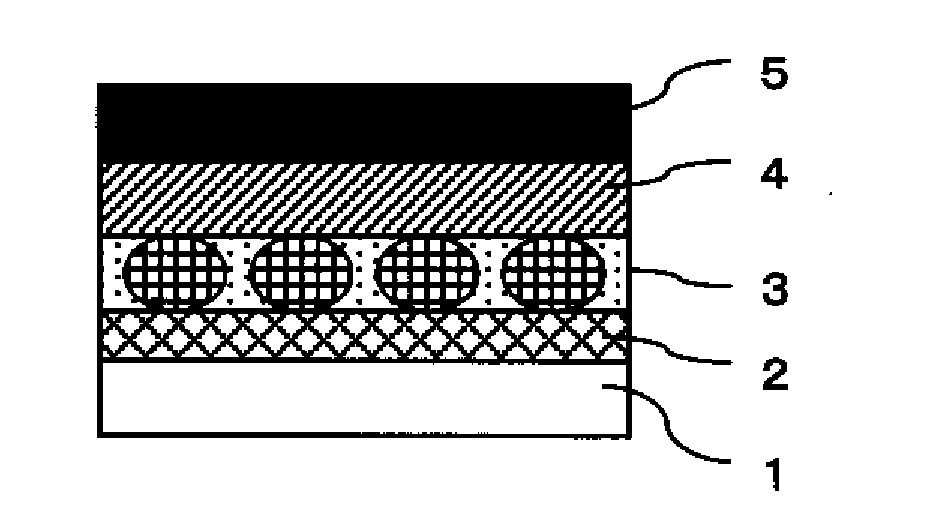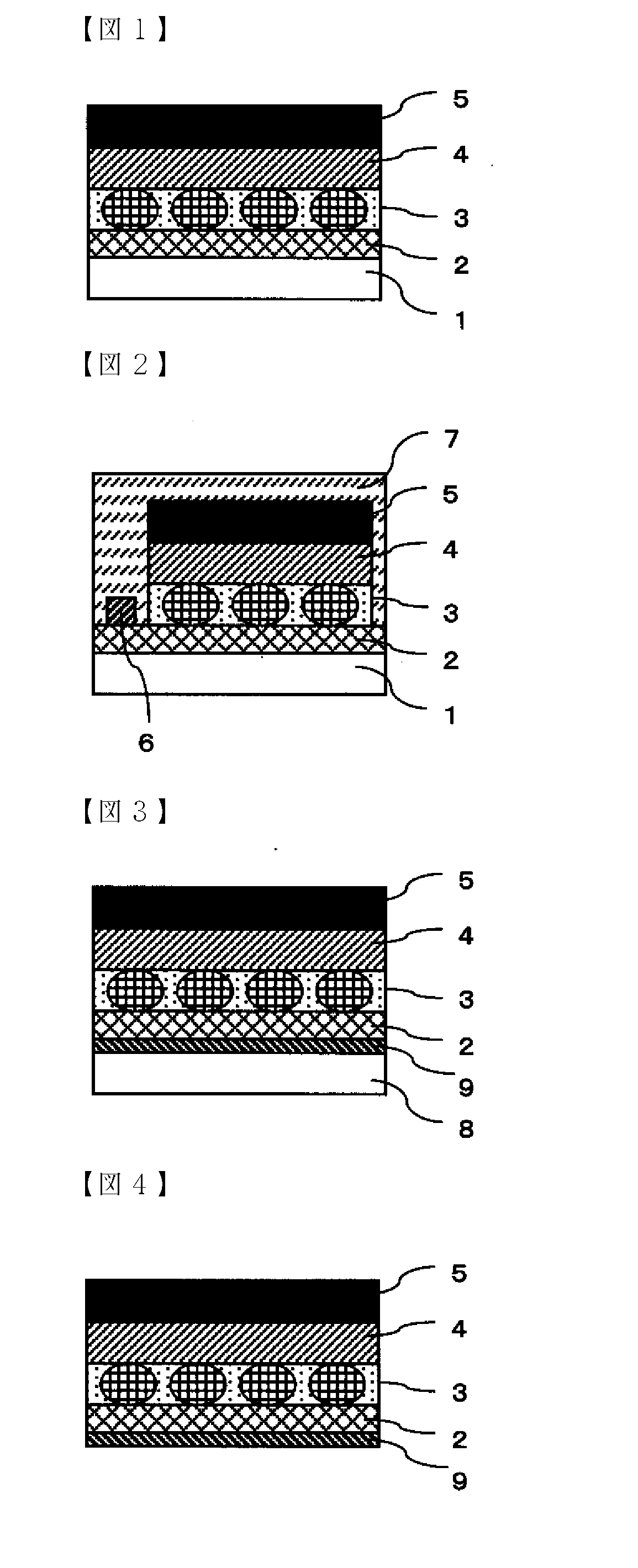Film with Transparent Conductive Layer, Flexible Functional Element and Flexible Dispersion-Type Electroluminescent Element, and Method for Producing the Same and Electronic Device by the Use Thereof
a technology of transparent conductive layer and flexible functional element, which is applied in the direction of discharge tube luminescnet screen, organic semiconductor device, synthetic resin layered product, etc., can solve the problems of easy cracking of microscopic cracks, high cost of color led, etc., to achieve sufficient keying durability, good click feeling of key operation, and excellent flexibility
- Summary
- Abstract
- Description
- Claims
- Application Information
AI Technical Summary
Benefits of technology
Problems solved by technology
Method used
Image
Examples
example 1
[0084]36 g of granular ITO microparticles having an average particle diameter of 0.03 μm (brand name: SUFP-HX made by Sumitomo Metal Mining Co., Ltd.) were mixed with 24 g of methyl isobutyl ketone (MIBK) and 36 g of cyclohexanone as the solvents, a dispersion treatment was given thereto, and subsequently 3.8 g of urethane acrylate based ultraviolet light curable resin binder and 0.2 g of a photo initiator (Dalocure 1173) were added and stirred well to yield a coating liquid for forming a transparent conductive layer in which the ITO microparticles having the dispersed average particle diameter of 130 nm were dispersed.
[0085]First, prior to producing a film with a transparent conductive layer, a heating shrinkage treatment (150° C.×15 minutes, tension free) was given to a base film (PET: thickness of 6 μm) lined with a support film (PET: thickness of 75 μm) via a heat resistant silicone low adhesive layer. Subsequently, the coating liquid for forming the transparent conductive layer...
example 2
[0094]The flexible dispersion-type EL element according to Example 2 was obtained in the same way as in Example 1, except that the coating liquid for forming the transparent conductive layer was wire-bar-coated (wire diameter: 0.075 mm) to form the transparent conductive layer (film thickness: about 0.5 μm) composed of the ITO microparticles and the binder, which were densely filled on the base film lined with the support film, to yield the film with the transparent conductive layer according to Example 2, having the peel strength of 2.4 g / cm between the support film and the base film, the dimensional change rate (thermal shrinkage rate) of 0.05% upon heating, the visible light transmittance of 95.1%, the haze value of 1.4% and the surface resistivity of 1500Ω / □ (ohms per square).
[0095]In the process for producing the above flexible dispersion-type EL element, the base film could be easily delaminated at the interface with the support film. The peel strength between the support film...
example 3
[0096]The film with the transparent conductive layer according to Example 3, having the peel strength of 2.3 g / cm between the support film and the base film, the dimensional change rate (thermal shrinkage rate) of 0.06% upon heating, the visible light transmittance of 95.0%, the haze value of 1.6% and the surface resistivity of 1500Ω / □ (ohms per square) was obtained in the same way as in Example 2, except that the heating shrinkage treatment (150° C.×15 minutes, tension free) was given to the base film (PET: thickness of 12 μm) lined with the support film (PET: thickness of 125 μm) via the heat resistant silicone low adhesive layer. The flexible dispersion-type EL element according to Example 3 was obtained in the same way as in Example 2, except for using this film with the transparent conductive layer.
[0097]In the process for producing the above flexible dispersion-type EL element, the base film could be easily delaminated at the interface with the support film. The peel strength ...
PUM
| Property | Measurement | Unit |
|---|---|---|
| thickness | aaaaa | aaaaa |
| thermal shrinkage | aaaaa | aaaaa |
| thickness | aaaaa | aaaaa |
Abstract
Description
Claims
Application Information
 Login to View More
Login to View More - R&D
- Intellectual Property
- Life Sciences
- Materials
- Tech Scout
- Unparalleled Data Quality
- Higher Quality Content
- 60% Fewer Hallucinations
Browse by: Latest US Patents, China's latest patents, Technical Efficacy Thesaurus, Application Domain, Technology Topic, Popular Technical Reports.
© 2025 PatSnap. All rights reserved.Legal|Privacy policy|Modern Slavery Act Transparency Statement|Sitemap|About US| Contact US: help@patsnap.com


